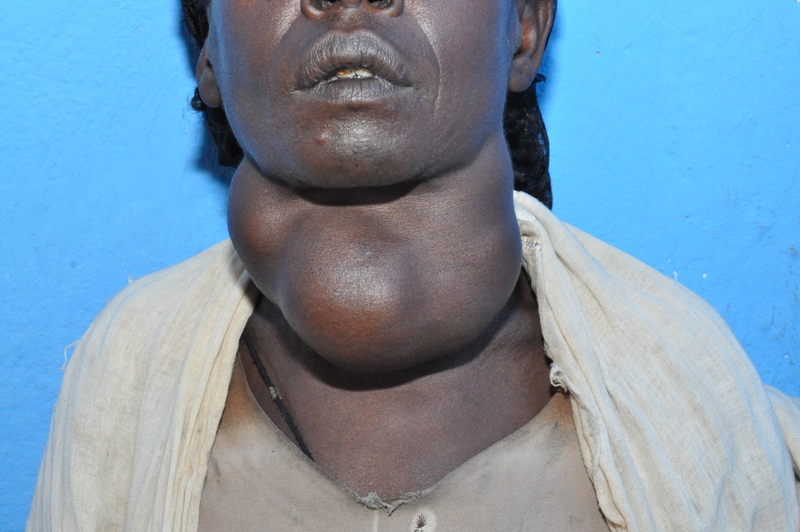This woman had a massive goiter secondary to iodine deficiency. Insufficient dietary iodine is the leading preventable cause of brain damage. Although iodine deficiency is easily solved through food fortification costing 2 cents per person annually, the prevalence of iodine deficiency among school-aged children in multiple African, Asian, and Eastern Mediterranean countries is as high as 90%.
There is tremendous variance of iodine deficiency within individual countries and deficiency is not linked to poor or disadvantaged districts. Iodine deficiency occurs where the soil has low iodine content. Food crops grown in iodine deficient soil provide inadequate dietary iodine.
Because iodine is required for thyroid hormone synthesis, iodine deficiency results in hypothyroidism and goiter. Congenital iodine deficiency results in a form of profound cognitive impairment known as cretinism. Other consequences include stillbirths, deaf mutism, subclinical hyper- or hypothyroidism, impaired mental function, and retarded physical development.
Iodine may be supplied in tablet or liquid form and taken daily. In adults, 150 mcg/d is sufficient for thyroid function and an adult multivitamin typically contains 150 mcg of iodine/tab. Population-based interventions should include iodization of salt. In some developing countries, eradication of iodine deficiency has been accomplished by adding iodine drops to well water.
Photos and text for Photo Rounds Friday courtesy of Richard P. Usatine, MD. This case was adapted from: Berggren R, Usatine R. In: Usatine R, Smith M, Mayeaux EJ, et al. Color Atlas of Family Medicine. 2nd ed. New York, NY: McGraw-Hill; 2013:53-79.
To learn more about the Color Atlas of Family Medicine, see:
• http://www.amazon.com/Color-Family-Medicine-Richard-Usatine/dp/0071769641/ref=dp_ob_title_bk
You can get the second edition of the Color Atlas of Family Medicine as an app for mobile devices by clicking this link:


